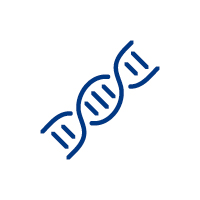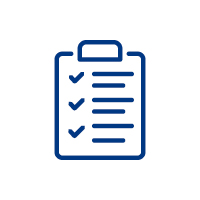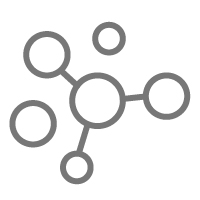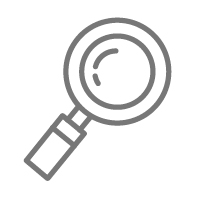Pathogen Traceability
Minimise food
recalls by tracking
contaminations
DNA PathoTracker: Investigate sources of contamination
through whole genome sequencing of pathogens
Risk of food contaminations
How secure is your global supply chain?
How stringent are your quality checks?
Food recalls due to pathogen contaminations and outbreaks of foodborne diseases are among the most dreaded incidents in the industry. Whole genome sequencing (WGS) has been globally accepted as the most accurate, high resolution method to identify pathogens.
Given the greater strain discrimination compared to more traditional methods, WGS is capable of helping you identify sources of contamination and decide which sanitary or preventative checks need to be improved.
Combining the genomic information with data such as the date and place of findings can help track down contaminations prior to any affected food products reaching your end consumers.
Food recalls due to pathogen contaminations and outbreaks of foodborne diseases are among the most dreaded incidents in the industry. Whole genome sequencing (WGS) has been globally accepted as the most accurate, high resolution method to identify pathogens.
Given the greater strain discrimination compared to more traditional methods, WGS is capable of helping you identify sources of contamination and decide which sanitary or preventative checks need to be improved.
Combining the genomic information with data such as the date and place of findings can help track down contaminations prior to any affected food products reaching your end consumers.
WHY DNA PATHOTRACKER?
Your benefits by integrating DNA PathoTracker

Gain improved clarity
and overview on your contamination
events through increased analytical resolution.

Respond much faster
in the event of a contamination due to
source identification at an early stage.

Identify pathogens based on DNA
which is unique for each bacterial strain
and is highly stable against environmental influences.

Make critical improvements
in your HACCP system by finding out
which preventive / QC measures may
have failed.

Build a customised pathogen database
helping you to compare against thousands of strains and samples globally
at the same time.

Minimise costly recalls
by utilising a highly scalable solution
that is able to help you throughout your
entire supply chain.
HOW DOES IT WORK?
6 easy steps to minimise food recalls by tracking contaminations







Pathogen is detected in production

Pathogen isolates are shipped to Eurofins Genomics

Whole genome sequencing of pathogen isolates

Sequence comparison with customised or public database

Results showing relationship between pathogen isolates and sources

Visualise your results over time and locations with DNA PathoTracker
Pathogen is detected
in production
Pathogen isolates are shipped
to Eurofins Genomics
Whole genome sequencing of pathogen isolates
Sequence comparison between isolates
Results showing relationship between pathogen isolates and sources
Visualise your results over time and locations with DNA PathoTracker
PATHOGEN TRACEABILITY
Frequently asked questions
What is whole genome sequencing?
Can WGS be used for production strain profiling?
What about microflora?
Whole genome sequencing (WGS) delivers exact DNA sequence data for the entire genome of an organism. It is based on next-generation sequencing (NGS), also known as high-throughput sequencing, which is a massively parallel DNA sequencing technology that allows for the analysis of samples and systems at a level that was never possible before. NGS machines can sequence large samples more cost-effectively than traditional methods, and in the process also generate more detailed genomic information.
WGS cannot only be used in the case of microbial contamination issues. It can also be a useful tool for a full characterisation of valuable production strains. The knowledge of the whole genome sequence leads to a unique definition of the production strain. This can be very helpful in case of e.g. patent infringement issues.
Complex bacterial / fungal mixed populations can also be analysed by WGS. Our “Microbiota Screening Services” enable
an insight into the microflora of food / environmental samples as well as fermentation processes by the use of so-called barcoding regions in the microbial DNA, thus identifying the genus or species. Our “Metagenomics Service” looks at the total DNA of a complex sample containing mixed populations and allows for an identification of strains and subspecies. Both approaches include and identify even non-cultivatable microorganisms.
Get in Touch With
Your dedicated food Expert

You are in good company – we are approved by our peers
Eurofins Genomics is a trusted brand
around the globe

Countries

Employees

Laboratoires

